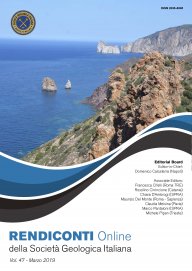
Electrical Conductivity as a tool to evaluate the various recharges of a Karst aquifer
Chiara Calligaris (a), Mario Galli, Fabio Gemiti, Stefano Piselli (b), Maurizio Tentor (c),
Luca Zini (a) & Franco Cucchi (a)
(a) Dipartimento di Matematica e Geoscienze, Trieste University, Via Weiss, 2 - 34128 Trieste, Italy.
(b) Laboratori HERAtech S.r.l., V.le Carlo Berti Pichat, 2/4 - 40127 Bologna, Italy.
(c) Gruppo Speleologico Monfalconese - Amici del Fante, Via E. Valentinis, 134 - 34074 Monfalcone (GO).
Corresponding author e-mail: calligar@units.it
DOI: https://doi.org/10.3301/ROL.2019.03
Volume: 47/2019
Pages: 13-17
Abstract
One of the challenges in karst hydrogeology has always been the necessity to identify the various contributions to groundwater recharge in order to evaluate and protect water resources. Over the centuries, several different techniques have been used such as the chemical analysis of major ions, isotope analyses, dye-tracing and
trace element analyses.
Electrical Conductivity, which is easy to collect and inexpensive to carry out, can also be used to discriminate between the different contributions of recharge, if the only meaningful differences in the ion composition is due to the concentration of calcium bicarbonate.
In the Classical Karst Region (NE Italy-SW Slovenia), researchers focussed on this parameter in order to distinguish between the allogenic and autogenic contributions in the chosen sampling points under various hydrogeological conditions.
Keywords
Get Full Text